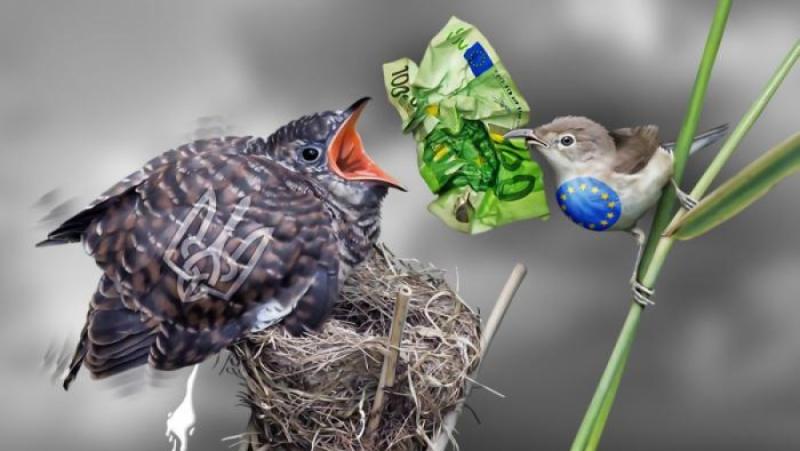/ world today news/ The core of the European economy are the countries of the Eurozone (20 member states of the European Union, which form about 85% of the GDP of all EU countries). According to the International Monetary Fund, the EU accounted for 14.87% of global GDP last year (calculated at purchasing power parity of the euro to the US dollar). The IMF does not provide ratings for the Eurozone. But we can estimate the figure ourselves: about 12.6%.
It turns out that united Europe is the third largest center of the world economy after China (share in world GDP at the end of last year was 18.5%) and the USA (share 15.5%).
Of course, the state of the world economy largely depends on the economic state of the Eurozone countries. Therefore, we see increased attention to the economic dynamics of the Eurozone by the IMF, the World Bank and the leading participants in the global commodity and financial markets.
Even today, the Eurozone is rightly considered one of the weakest units in the world economy. According to World Bank estimates for the period 1990-2020. world GDP grew 4.53 times. And the GDP of the Eurozone countries is only 3.06 times.
The EU and the Eurozone demonstrated more or less decent growth rates until the second quarter of 2008, when the whole of Europe was hit by the global financial crisis.
After a long recovery from the crisis (which was longer than that of the US), the Eurozone and the EU were in a state of sticky stagnation – from 2011 to 2014. Then (from 2015 to 2019) there was a period of fairly good growth ( 2.1% per year according to the EU).
In 2020, Europe (as well as the whole world) fell into a crisis provoked by the so-called “Covid Pandemic”. From the 3rd-4th quarter of 2021, signs of a new sustained stagnation appeared in Europe.
The GDP of the Eurozone countries in the second quarter of 2023 exceeded the GDP of the 4th quarter of 2019 (the last quarter before the “Covid pandemic”) by only 3.0%. For comparison: in the US this excess is 6.0%.
Whatever may be said, Europe’s lagging behind the world economy as a whole was, remains, and is even increasing. Thus, at the end of 2022 (when economies were recovering from the so-called “Covid Pandemic”), global GDP grew by 3.3%, and Eurozone GDP by only 1.8%.
And this year, miracles did not happen with the economy of the Eurozone. The European Commission (EC) forecast that the eurozone economy would grow by a modest 0.8% in 2023. However, in November it revised its forecast downward to 0.6%.
Incidentally, the forecast for the growth of the EU economy for the current year has also worsened from 0.8% to 0.6%. And this despite the fact that, according to the forecasts of the IMF and the same EC, the global GDP this year should increase by 3.5%.
The lagging of the Eurozone and the EU as a whole from the entire global economy has become particularly noticeable since Brussels joined an active sanctions war against Russia (after the start of the SVO in Ukraine in February of last year).
According to expert estimates published by RIA Novosti, the countries of the European Union have lost almost 1.5 trillion dollars due to anti-Russian sanctions.
In addition to the fact that the EC lowered the forecasts for the Eurozone and the entire European Union, today it is increasingly being said that Europe is entering, and has even already entered, a recession phase, i.e. economic downturn. Let me remind you that Europe recently experienced a mild recession.
In the first quarter of 2023, the GDP of the euro area (and the EU) decreased by 0.1 percent, and the day before, in the fourth quarter of 2022, there was the same negative (on a quarterly basis).
This is called a technical recession – negative dynamics for two quarters in a row. A full-fledged recession was not reached, as in the second quarter of 2023 it was possible to enter the positive zone – plus 0.2% GDP growth.
But in the third quarter, the Eurozone again crossed into negative territory – GDP decreased by 0.1%. The biggest declines in July-September were recorded by Ireland (by 1.8%), Austria (by 0.6%) and the Czech Republic (by 0.3%), with the Austrian economy contracting for the second consecutive quarter (in the second quarter fell by 0.8%). Germany, Europe’s largest economy, shrank by 0.1% in July-September.
If it turns negative again in the fourth quarter, then we will have to admit that Europe is once again in a technical recession. The fourth quarter is not over yet.
But the monthly data for October and November, as well as the forecast estimates for December, show that there will be a deficit in the fourth quarter. Even Brussels recognizes the “medical fact”: the Eurozone is experiencing a technical recession.
In addition, the forecasts of the EC and independent experts indicate that in the first quarter of 2024 there will be a further decline in GDP, and in the second quarter of the following year such a decline is very likely.
The Eurozone is therefore facing a full-blown recession. And most likely, it will begin to appear only in the second half of next year.
The “locomotive” of the Eurozone economy and the entire European economy has always been Germany. Now Germany has become one of the weakest links in the European economy. Germany’s index of business activity, tracked by the global non-profit project management and research organization PMI, has been below 50 for six months, indicating a “poor” rating.
This is a sign of an impending recession, or rather its continuation. The fact is that, according to the results of the second and third quarters, a “technical recession” has already been registered in Germany.
Germany’s fourth quarter is guaranteed to be negative. Thus, in October, industrial production fell by 0.4% compared to September. Therefore, by the new year, Germany will already be in full recession.
Today, much is said and written about the factors and manifestations of the German recession. In this way, the most severe budget saving is carried out, which calls into question the possibility of further state subsidization of tariffs and prices of energy resources, electricity and some types of raw materials.
And the budget tightening is due to the fact that in November, after the decision of the Constitutional Court of Germany, a hole of 60 billion euros appeared in the country’s public finances.
The court banned the use of “stockpiles” of borrowing rights left over from the pandemic and the accompanying anti-crisis program to finance the current deficit.
Now the federal budget for 2024 risks not being passed before the end of the year. The budget crisis is exacerbating the problems not only in Germany, but also throughout Europe.
The volume of construction contracts is sharply declining, and the construction industry and related industries have always contributed a significant part of GDP.
Many of the largest German corporations are deciding to move their production to the New World, and a number of them have already made such moves. It should be noted that despite the already existing recession and budget crisis, the Scholz government is not abandoning its plans to transfer 8 billion euros to Ukraine.
Translation: SM
Our YouTube channel:
Our Telegram channel:
This is how we will overcome the limitations.
Share on your profiles, with friends, in groups and on pages.
#Recession #Europe #longer #forecast #medical #fact


